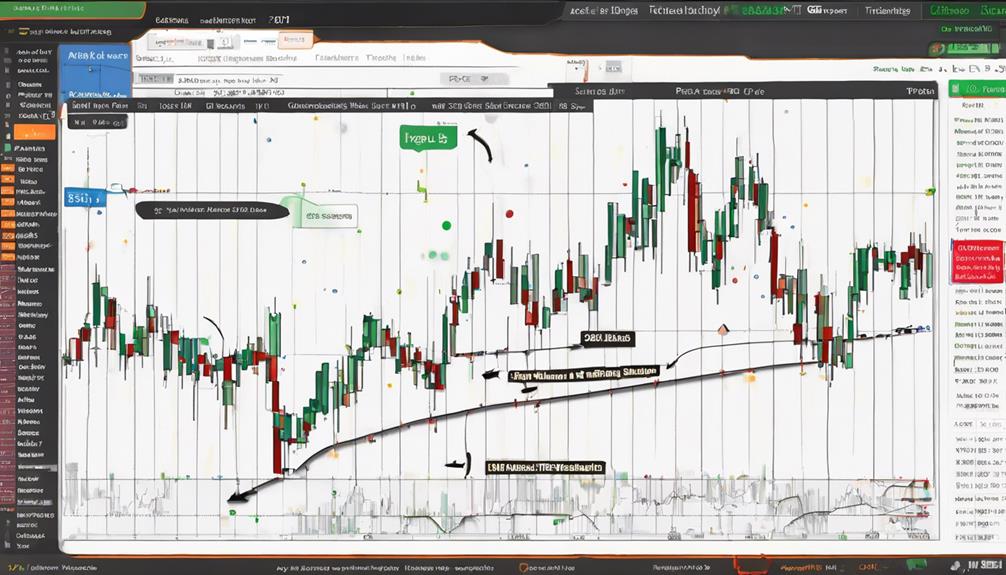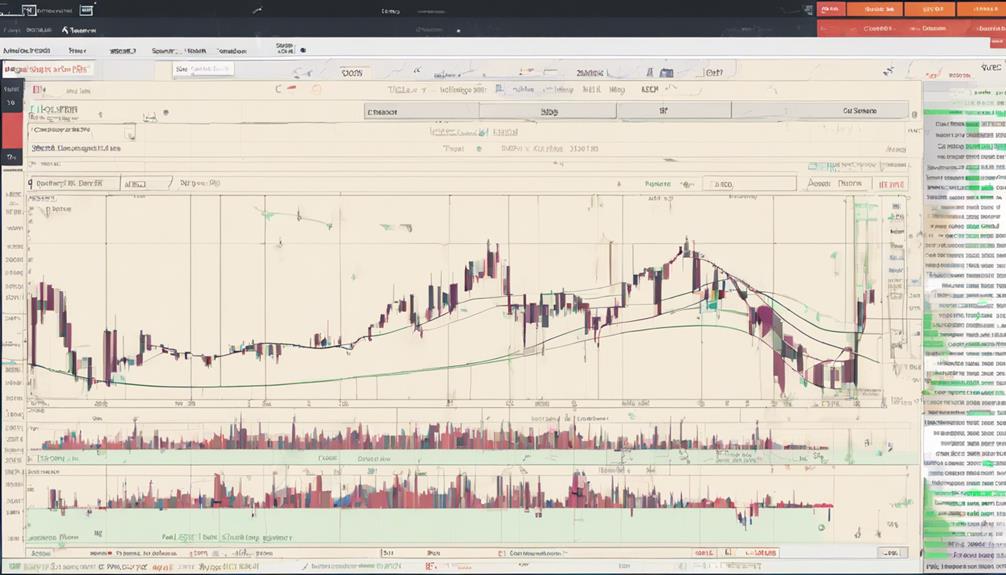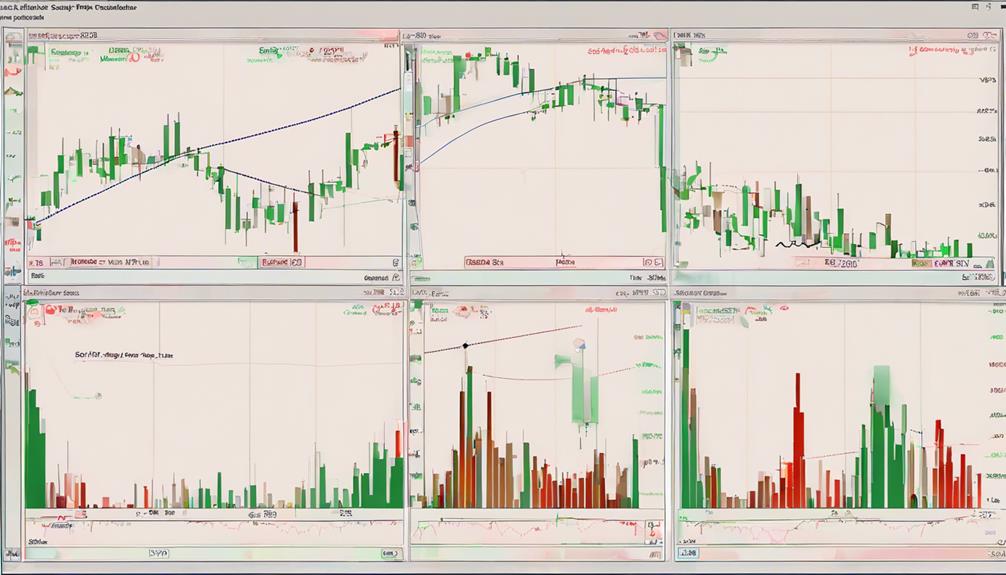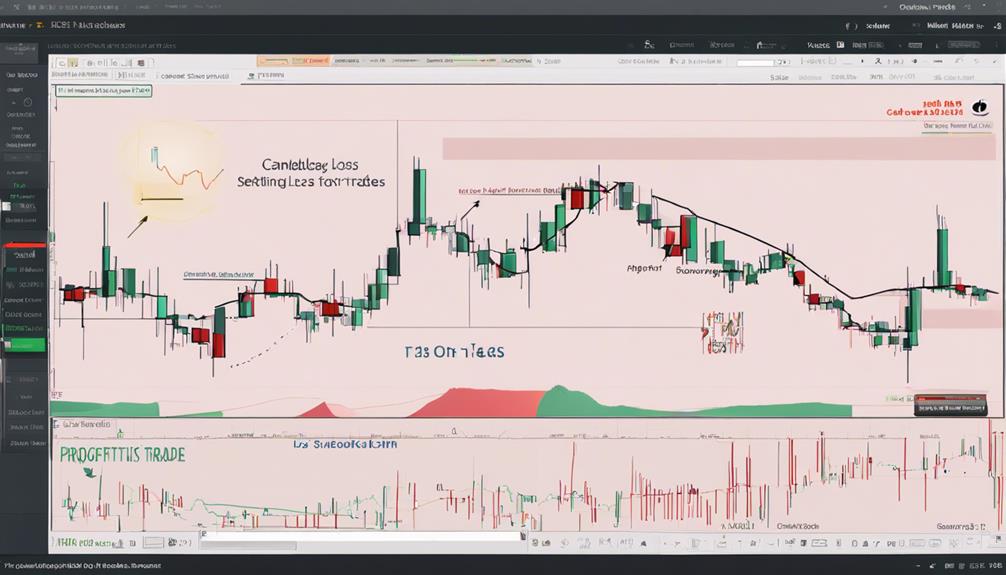Exploring the Parabolic SAR indicator for swing trading unveils a realm of strategic possibilities that can significantly enhance one's trading performance.
The subtle yet powerful nature of this tool lies in its ability to adapt to market dynamics and assist in pinpointing optimal entry and exit points.
By mastering the nuances of the Parabolic SAR, traders can harness its potential to navigate the complexities of swing trading with precision and finesse.
As we delve deeper into its intricacies, a world of strategic insights and tactical advantages awaits those keen on refining their trading approach.
Understanding Parabolic SAR Calculation
The calculation of the Parabolic SAR indicator is essential for comprehending its dynamic nature within swing trading strategies. The Parabolic SAR (Stop and Reverse) indicator is a trend-following technical analysis tool that helps traders identify potential entry and exit points based on the price movement of an asset. Its calculation involves the determination of two key components: the Extreme Point (EP), which signifies the highest price in an uptrend or the lowest price in a downtrend, and the Acceleration Factor (AF), which controls the rate of change in the SAR value.
The formula for calculating the Parabolic SAR is SARn+1 = SARn + AF(EP – SARn), where SARn represents the current SAR value. This formula enables the indicator to adjust its positioning concerning the price action, creating a moving stop that traders can use to follow the trend. Trend changes are signaled when the market price crosses the SAR value, indicating a shift in momentum. Additionally, the Maximum Acceleration Factor plays a crucial role in setting limits on how quickly the SAR value can move, impacting the sensitivity of the indicator to price fluctuations.
Parabolic SAR Trading Strategies

Utilizing Parabolic SAR trading strategies enhances trend identification and provides clear entry and exit signals based on the indicator's dot positions. When implementing Parabolic SAR for trading, several strategies can be employed to optimize its effectiveness:
- Combining with Moving Averages: Integrating Parabolic SAR with an exponential moving average can help confirm trends and filter out false signals.
- Setting Stop Loss: Establishing appropriate stop-loss levels is crucial to manage risk and protect capital in case of adverse price movements.
- Exploring Double Parabolic SAR: Utilizing the Double Parabolic SAR strategy involves two PSAR indicators to capture potential trend reversals more accurately.
- Adjusting Trade Orders: Traders should consider trailing stops and modifying trade orders after entering a position to maximize profits and minimize losses.
- Pairing with Complementary Tools: Enhancing Parabolic SAR with other indicators like the Average True Range (ATR) or Relative Strength Index (RSI) can provide a more comprehensive trading signal.
Setting Up Parabolic SAR Backtesting

To effectively assess the performance of Parabolic SAR in swing trading, setting up a robust backtesting framework is essential. Backtesting Parabolic SAR involves using historical data to analyze the indicator's effectiveness in various market conditions. Traders should set up a backtesting environment with accurate price data and different timeframes to thoroughly evaluate Parabolic SAR's performance. Utilizing software like MetaTrader or TradingView can streamline the backtesting process by allowing traders to test different Parabolic SAR strategies with varying settings and time periods efficiently.
During backtesting, traders can analyze the data to evaluate how well Parabolic SAR aligns with their trading strategy. By assessing the results of the backtesting process, traders can fine-tune the indicator's settings for optimal performance in swing trading scenarios. This data-driven approach helps traders understand the strengths and weaknesses of Parabolic SAR before implementing real trades, ultimately enhancing their decision-making process and trading outcomes.
Combining Parabolic SAR With Indicators

Combining Parabolic SAR with other technical indicators enhances trend analysis and signal accuracy in swing trading strategies. By using a variety of indicators in conjunction with Parabolic SAR, traders can gain a more comprehensive understanding of market conditions and make more informed trading decisions. Here's how different indicators can be effectively utilized alongside Parabolic SAR:
- Moving Average: Confirms trend direction and provides entry/exit signals.
- Relative Strength Index (RSI): Helps identify overbought or oversold conditions for better trading decisions.
- Bollinger Bands: Indicates potential price breakouts or reversals in the market.
- MACD: Offers a more comprehensive view of trend strength and potential reversals.
- Stochastic Oscillator: Confirms trend changes and provides additional entry/exit signals for swing trading strategies.
Integrating these indicators with Parabolic SAR can help traders validate signals, strengthen their analysis, and improve the overall effectiveness of their trading strategy.
Parabolic SAR for Trade Management

Effective trade management with the Parabolic SAR indicator involves strategically adjusting stop-loss orders based on the indicator's dynamic trailing stop-loss points.
When using Parabolic SAR for trade management, traders can capitalize on buy signals by setting their stop-loss just below the SAR dots as the price moves in an uptrend. This trailing stop allows for locking in profits as the price continues to rise.
Conversely, during downtrends, sell signals can be confirmed by the SAR moving above the price, prompting traders to set their stop-loss just above the SAR dots to secure gains on the way down.
The 'stop and reverse' feature of Parabolic SAR aids in capturing trend reversals by flipping positions when the SAR switches sides. By incorporating Parabolic SAR into their trading strategy, traders can enhance risk management, identify potential trade setups, and adapt to trend changes promptly based on price action and the indicator's signals.
Can the Parabolic SAR Indicator be Used for Swing Trading as Well as Option Trading?
Yes, mastering option trading with parabolic SAR indicator is absolutely possible for swing trading as well. The parabolic SAR indicator can be a valuable tool for identifying potential trend reversals and providing entry and exit signals in both swing and option trading strategies.
Frequently Asked Questions
What Are the Best Parabolic SAR Settings for Swing Trading?
For swing trading, optimal Parabolic SAR settings often include AF 0.04 and Max AF 0.4, providing more aggressive signals. These settings, when applied on longer timeframes like 1-hour or daily charts, can cater to diverse risk tolerances and trading styles.
How Can I Make My Parabolic SAR More Accurate?
To enhance Parabolic SAR accuracy, adjust the Acceleration Factor (AF) for sensitivity to price changes. Select appropriate timeframes for trading styles. Combine with complementary indicators for confirmation signals. Avoid use in consolidating markets for trend identification precision. Regularly adapt settings for market conditions.
Which Indicator Should Be Used With the Parabolic Sar?
When paired with the Parabolic SAR indicator, incorporating the Relative Strength Index (RSI) can enhance trade entries by pinpointing overbought or oversold conditions with precision akin to a skilled archer hitting a target.
Is Parabolic SAR Indicator Profitable?
Yes, the Parabolic SAR indicator can be profitable in swing trading due to its ability to signal trend reversals and capture significant price movements. However, proper risk management and combining with other indicators are crucial for maximizing profitability.
Conclusion
In the realm of swing trading, mastering the Parabolic SAR indicator is akin to wielding a powerful tool that can illuminate the path to profitable trades. By delving into its calculation, strategies, backtesting, and integration with other indicators, traders can unlock its full potential for trend identification and trade management.
Just as a skilled navigator relies on a compass to navigate stormy seas, traders can rely on the Parabolic SAR to steer them towards success in the volatile markets.
